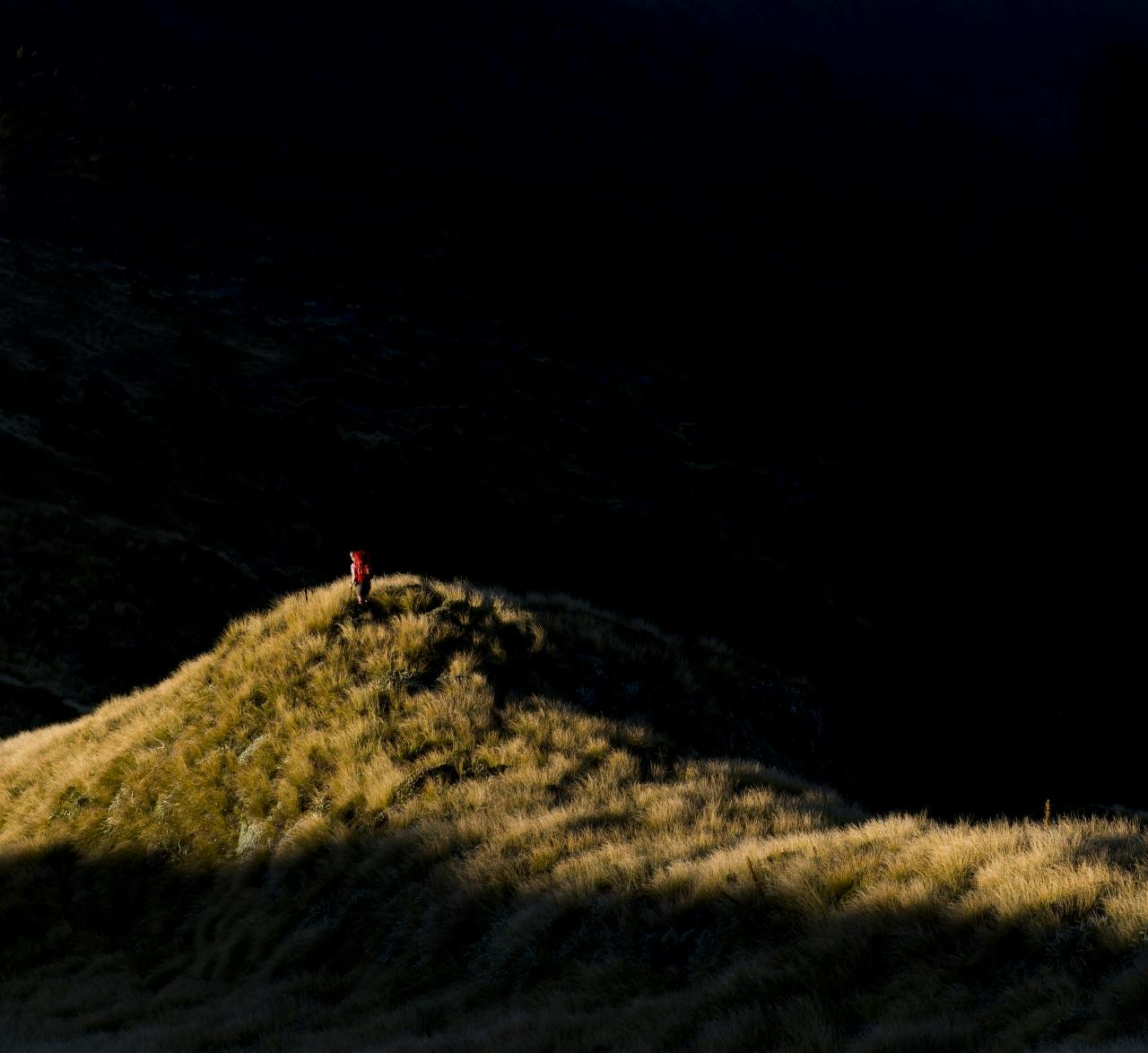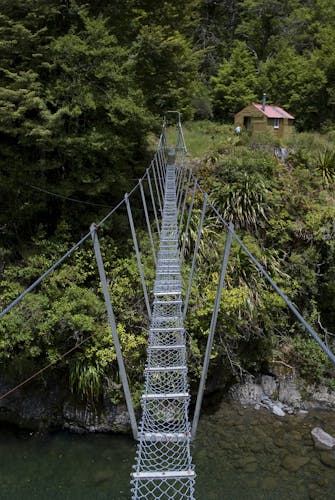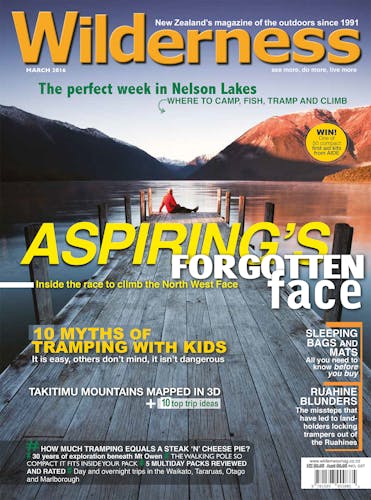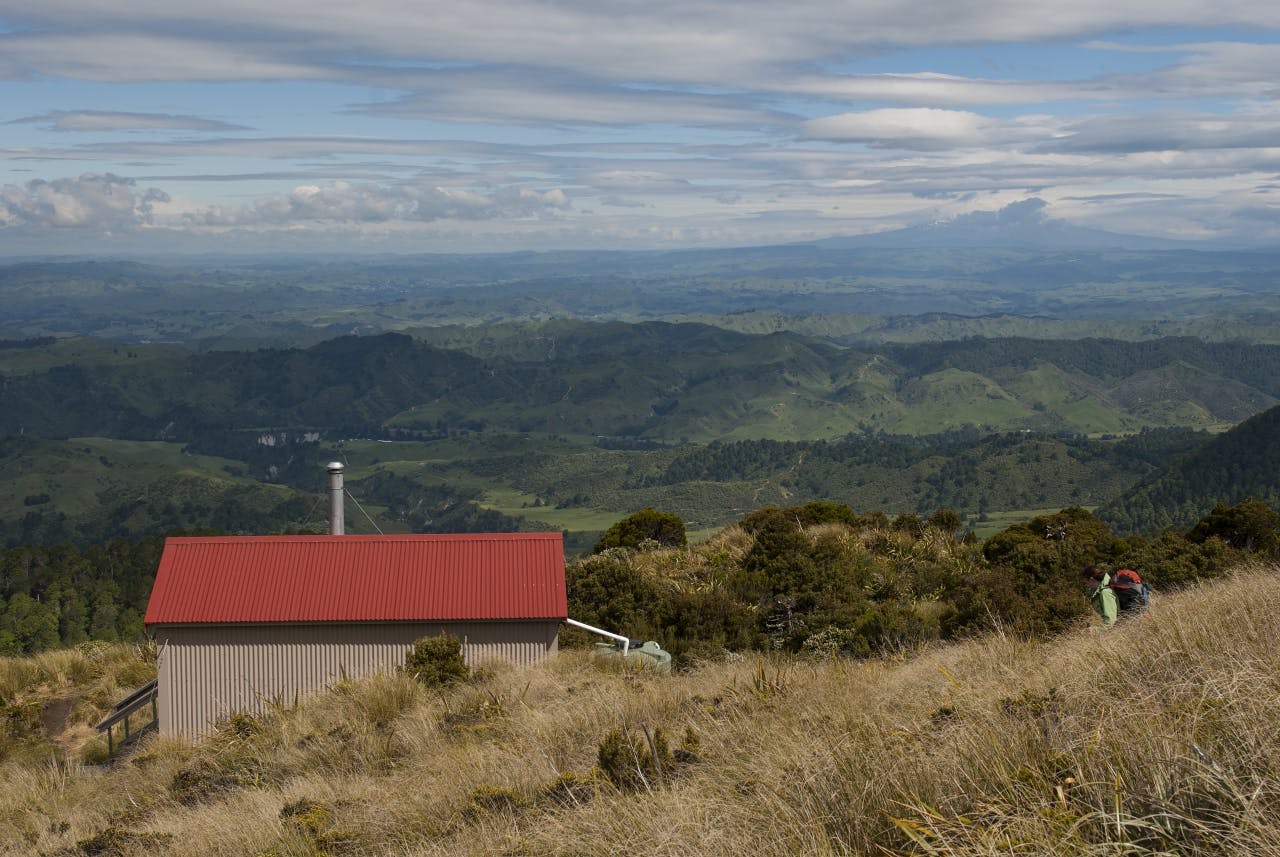Matthew Pike uncovers the fall-outs and government botches that have led to a favourite tramping region becoming increasingly shut off to public access
As trampers we often take for granted that the most beautiful spots in each of our parks come with free access. Even if it means crossing private land; an agreement, a public right of way, or a legislative clause will guarantee the access every Kiwi deserves.
Not so in the north-western corner of Ruahine Forest Park – a region the Federated Mountain Clubs of New Zealand regards as the number one access issue facing trampers.
The likes of Purity Hut, Crow Hut, McKinnon Hut, Colenso, Wooden Peg and the Hikurangi Range are prime tramping spots, providing rugged forest and tops walking, the quality of which is rarely matched in the North Island. But accessing them has become out of the question for many trampers of late, and is set to become harder still.
Three major access points in the north-west Ruahines – Mokai, Rangitane and Mangakukeke roads – require crossing private land before reaching the park. All three have relied on ‘gentlemen’s’ agreements for access, and now trampers are rueing the fact that formal access was never agreed.
Access to the track leading to Purity Hut is over private farmland at the end of Mangakukeke Road. Prior permission is required and is set to become more restricted as the landowner becomes increasingly intolerant of what he regards as some trampers’ “sense of entitlement”.
Mokai Road access currently follows a paper road following a hard-to-negotiate line to the top of the ridge, rather than following a far more accessible line through the valley.
But the biggest worry of all is Kawhatau Base, at the end of Rangitane Road. For years, trampers could access a range of popular trails from this point, including to Crow Hut and Mckinnon Hut. The Base itself is a DOC building which could be hired out to groups. It’s also the site of a charming old cableway over the Kawhatau River.
Although the park is accessible via a tedious two-hour traipse up the river when it’s running low, road access to the park is blocked to the public by a section of private land. In the past this wasn’t a problem because the previous landowner let trampers walk through his property and DOC was happy to maintain this informal agreement until it came back to bite it.
Around four years ago, the owners decided to subdivide and sell. DOC was given the chance to buy the crucial block of land, either to add it to the conservation estate, or to secure a public right of way before on-selling.

Shadowlands – unless DOC renegotiates access, large tracts of the Ruahines are essentially off-limits. Photo: Jonathan Astin
Instead, says previous owner Alan Rennie, the department “considered the land of low value to them”. The department sat idle while a private landowner bought the property and subsequently denied public access to Kawhatau Base.
“I don’t think we’ll get road access to Kawhatau Base again unless that portion of land comes onto the market,” believes DOC’s former conservation services manager at Palmerston North, Rod Smillie. Smillie wasn’t with DOC when the sale took place, but had been heavily involved with negotiations until the end of 2015.
“I’m a bit disappointed that consent to subdivide didn’t take into consideration that access. It was very popular; people loved going there – it was safe and it gave access to a number of destinations.”
The new landowner, who wishes to remain anonymous due to sensitivities surrounding his work in the police force, says the public has DOC to blame for the lack of access. He says he gave the department an offer once he’d bought the property which would have allowed tramper access.
“What I proposed was very fair and reasonable,” he says. “I proposed they lease me the Kawhatau Base for $1 a year and we would maintain everything except replacement of the roofing iron and the generator.
“DOC staff would have unlimited access through my place from Monday to Friday and they’d have free use of the building from Monday to Thursday. Tramping clubs, school groups, university groups, police SAR and LandSAR could all access and use the facility for $50 a night – the same as DOC had charged.”
The landowner says DOC contacted him a few weeks after he’d made the offer to say they couldn’t accept because it didn’t include hunters.
“I said I’d sold a house to buy this place for hunting – why would I allow hunters through when they have access up river? I believe I was being reasonably accommodating – but DOC have a very bullish attitude.”
He says he won’t grant access to trampers because DOC didn’t accept his offer.
Concerns that this problem may arise surfaced more than 30 years ago, says Rod Smillie. He recalls speaking to a former NZFS senior ranger who had prepared all the paperwork, complete with agreement from the landowner, that legal access should be granted from the road to Kawhatau Base. “He sent the paperwork off to headquarters in Wellington,” explains Smillie, “but then there was a restructure in the Forest Service and all that paperwork got lost.
“He tried to find it and get it signed off, but the whole issue got put on the backburner because there were no access problems at the time, so there was no motivation to seal the deal.”
Smillie says most of the issues landowners have had in the past concern hunters, rather than trampers. “The problem was at its peak around 7-10 years ago. Meat hunters were able to shoot deer and sell it down at the local chiller. Poaching took place on boundaries and hunters were wandering around farms. But that’s pretty much disappeared now the laws have changed and you need to be a registered hunter to sell the meat, and you need a whole lot of food quality accreditations.”
However, Richard Gorringe, who owns land at the end of Mangakukeke Road, with access to Purity and Kelly Knight huts, says it’s trampers he’s had enough of.
“A lot of trampers have a sense of entitlement and we’re sick of the lack of respect and consideration,” he explains. “We’re not second class citizens – we’re not doormats. They must think we’re country hicks or something.”

Six bunk Crow Hut is tough to reach now that that access to Kawhatau Base has been closed. Photo: Jonathan Astin
Gorringe’s farm used to be subject to a legal right of way which has since expired, to the considerable relief of the landowner. “People abused that right of way like you wouldn’t believe. We’d get major urban tramping clubs heading through lambing ewes in the middle of the night. In terms of animal welfare that’s just about the worst thing you can do. I’d find 20 dead lambs because of that. They would say they have legal access and that we can’t do anything about it, so you can understand why we get so angry.”
Gorringe claims trampers spooked an injured bull over a bank, breaking its back. He says DOC and the Walking Access Commission have further antagonised local landowners, so he’ll never allow public access across his land.
“There’s no legal access so we can deny access at any time,” he says. “We let people through on a very limited basis. I’m running a business. Farming isn’t easy and we’ve had two terrible years in a row, so we don’t want anything else compromising our situation. When people walk through the farm they stir up stock – they are costing us money, so they can bloody well pay.”
Gorringe says group sizes should be no more than three. “You’d better come up with a bottle of wine or a six pack of beer otherwise you can get lost – you’re costing me.”
Secretary for the Federated Mountain Clubs, Jamie Stewart, says the access issue in the Ruahines is the worst trampers are currently facing nationwide. “It’s definitely the worst in terms of locking up a large area of public conservation land with no other practical access. Lots of people in the area between Manawatu and Ohakune look to the Ruahines for recreation. It’s really shutting down the possibilities for people.”
He believes the situation has now become even worse since DOC’s restructure made Rod Smillie – the man many regard as the department’s key negotiator for the Ruahine access issues – redundant.
For local trampers, the situation is extremely frustrating. “We’ve got excellent tramping areas here and it’s just a shame people can’t get there more easily,” says Anne Lawrence, secretary of Palmerston North Tramping and Mountaineering Club. “If an access is closed you just don’t go. If you end up having to travel lots more to get to the tops, it will take too long to make a useful weekend trip.”
Lawrence says there are access issues all over the Ruahines, including trespass warning signs and uncertainty about where is private and where is public land on the north-eastern side. But she believes the Kawhatau Base closure is the biggest shame: “It’s a bottleneck from where you can access a few different places. From the base there’s a cableway across the river. As a tramping club you like to try different experiences and the cableway is something different. But I imagine that will rust up and become a piece of history that’s gone.”
Lawrence says while trampers felt progress was being made, they were prepared to be patient to allow time for negotiations. But now the feeling is that things have come to a halt. “We’re told it’s an on-going issue. And there’s no single place we can go to find out what’s happening at each access point.” So local trampers are now collecting the information themselves and collating it so it can be taken to the relevant authorities for information on what’s happening in each case.
Tramper frustration at the lack of communication is understandable. In an email response to Wilderness’s enquiries, DOC’s media spokesman Nick Hirst said: “DOC is talking to landowners in the area to try and establish alternative access routes to the Kawhatau Base area in the Ruahine Forest Park.”
Hirst refused to answer questions about why DOC chose not to purchase the land in front of Kawhatau Base or why it rejected the new landowner’s offer of leasing out Kawhatau Base. “We’re not in a position to talk in detail about those discussions or about past discussions with landowners in the area,” he wrote.
Fish and Game spokesman Don Rood says this is a familiar response: “It’s similar to the recent situation with livestock on Lake Taylor; DOC doesn’t want to know. It’s appalling – they’re supposed to be the guardians.”
Rood says situations like those at Kawhatau Base are becoming increasingly common around the country. “In this case, there’s a long established track up to Colenso and you have the public asset of a DOC hut left idle all because of the caprices of a single landowner. It’s not acceptable.
“I would ask landowners denying access to think twice and consider the greater public good. I’d commend the enlightened farmers who understand that public access is a good way of preventing the urban-rural divide.”
Despite tramper doubts about progress in the Ruahines, especially given the loss of Rod Smillie from the DOC team, Smillie himself believes DOC has the right people to continue the work needed and trampers can hope for good access again. “I’m pretty confident with pressure from FMC and the local Conservation Board there will be progress. The Walking Access Commission (WAC) is good at sorting these issues out. It has so many experiences it can call on to allow it to come up with a solution. It’s worth its weight in gold.”
WAC’s Ric Cullinane says continued patience is needed for situations like this, as they’ll never be solved overnight. “If you want to do it by the weekend, it’s never going to happen. These things take a long time because good strong consensus and collaboration is far more enduring than a quick and dirty solution. We’re living with the consequences of quick and dirty solutions now. In many cases, it can involve a significant cultural change on behalf of council staff and landholders.”
Cullinane says pushing landowners into a corner is the worst thing you can do. “From our point of view, it’s about relationships and building them with landholders.”
But if the opinions of Richard Gorringe and the landowner near Kawhatau Base are anything to go by, there’s a lot of relationship building required. Worryingly, access to the Ruahines may be the tip of the iceberg. “I remember talking to a guy from DOC who said 30 per cent of DOC access tracks are not legally binding,” says the FMC’s Jamie Stewart.
If this is the case, future changes in land ownership could see more of those ‘gentlemen’s’ agreements come a cropper and access to treasured public conservation land put at risk.








